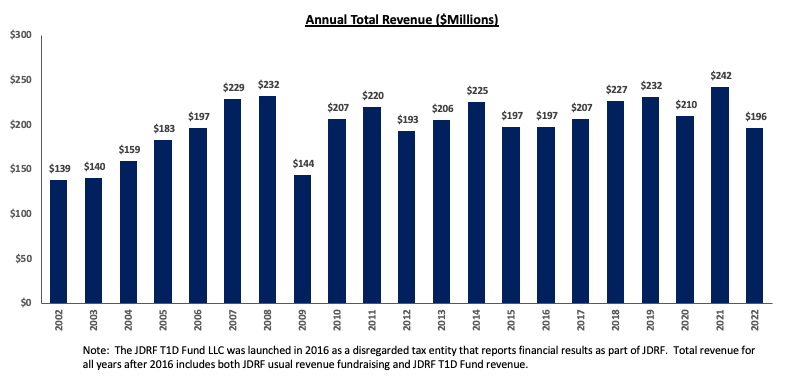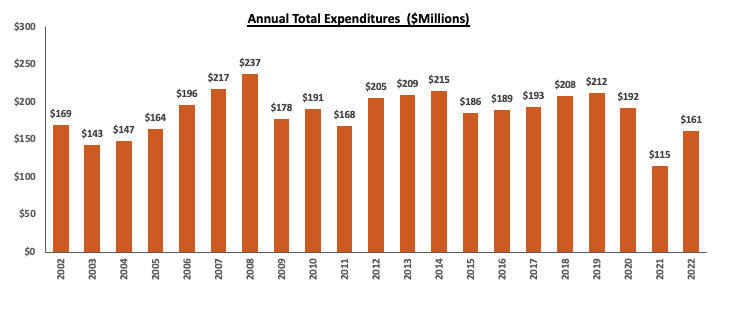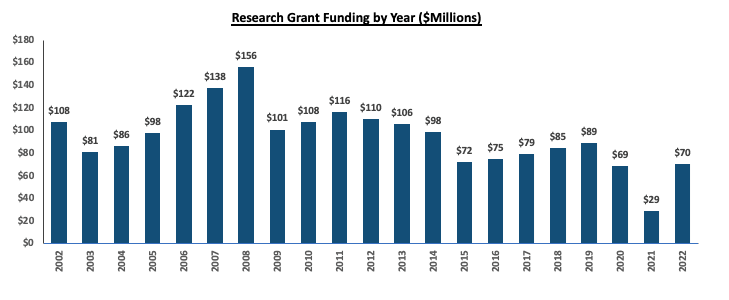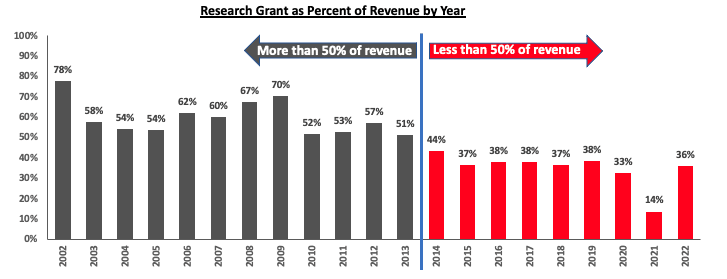May 12, 2023
On Tuesday of this week, JDRF released financial statements from its most recent fiscal year, FY2022 (which started July 1, 2021 and ended on June 30, 2022) and is particularly noteworthy because it is the first statement after the end of the COVID crisis. Here we provide a quick overview of revenue, expenses, and research grants. In the weeks ahead we will follow up with deeper analysis.
Overall, FY2022 financial information reflects a return to pre-COVID levels. Total revenue was $196 million, modestly softer than most years in the prior decade (see Appendix A). Although a return to in-person fundraising events gave a positive boost, other revenue engines were not as strong. In 2021, the T1D Fund contributed $57 million from new fundraising rounds and profitable investment exits that were not repeated in 2022.
Total expenses increased from 2021 but remain lower than any other year of the past decade, indicating that JDRF is maintaining some of the cost-reduction benefits of its 2020 restructuring. This restructuring included chapter closings, staff layoffs, and salary cuts (see Appendix B).
Research grants returned to levels that were typical of the years leading up to COVID and are much higher than they were during COVID. In FY2022, JDRF provided $70 million to fund research grants, up from $29 million in 2021, but down from $89 million spent on research grants in 2019 (see Appendix C). Research grants as a percent of revenue, a measure of relative strategic importance, rose from 14% in the prior year to 36% in 2022, but is still well behind the levels of a decade ago. In each year prior to 2013, research grant funding accounted for greater than 50% of revenue; in each year since 2014, research grant funding has been less than 50% of revenue (see Appendix D).
Appendix A: Total Revenue by Year

Appendix B: Total Expenditures by Year

Appendix C: Research Grant Funding by Year

Appendix D: Research Grant Funding as a Percent of Total Revenue by Year

